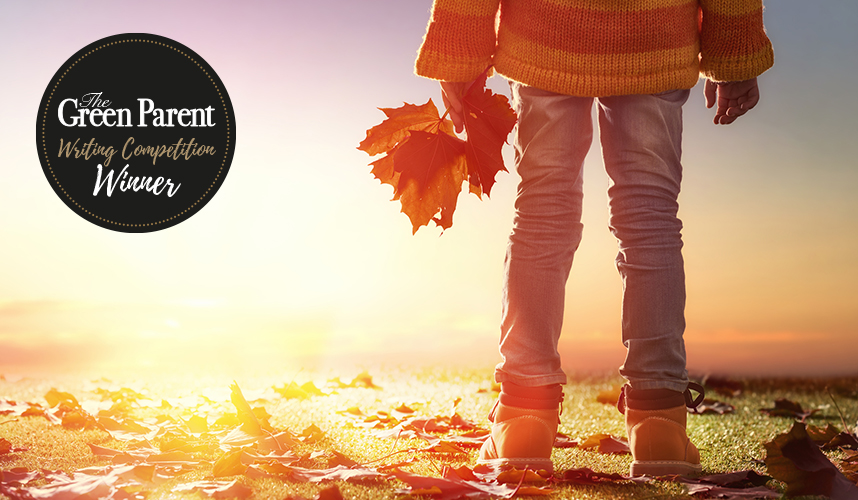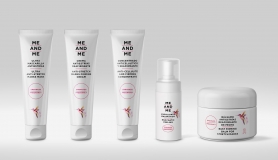“Mum! There’s a shrew in my shoe,” shouts my youngest son from the kitchen. “Oh, it’s okay,” he continues, “he’s in your shoe now,” and with that, he puts on his shoe and runs off to play in the garden.
The shrews have been resident in our house for a couple of weeks now. They seem quite tame and remarkably fearless for creatures who are so tiny and surrounded by three curious children. We don’t mind the shrews – I’ve tried to tempt them back into their natural habitat with humane traps and peanut butter, I even caught one under a glass and released him into the wild, but he came back and he seems to have brought his friends with him.
We do our best to keep the floors free of crumbs and make sure that the food cupboards are always closed, so I can only imagine that the shrews are eating the rather large house spiders that also roam free in our home…
From hibernating ladybirds on the window frames, to partridges perched on the sofa and starlings in the wall cavities (it’s alright, we rescued her and set her free, and we still have a large plastered hole in the wall to prove it), the line that divides us from ‘the wild’ is fading daily.
In the garden we have a pheasant called Brian – to be honest, there have been several pheasants every year, all called Brian, but shhh! don’t tell the children!
On a warm, hazy autumnal afternoon back in 2013, I was feeding my new-born daughter in the living room, when I heard a flapping noise coming from our downstairs bathroom. Tentatively I peered around the corner to see Brian strutting his stuff across the tiled floor, before flapping his enormous wings and flying up to sit on the windowsill.
There’s nothing like a large egotistical pheasant in the bathroom to truly challenge a sleep deprived, exhausted new mother. For a moment I wondered if I was hallucinating, I blinked my weary eyes a few times in an attempt to focus, but it seemed that there was indeed still a pheasant in the bathroom. I retreated to the sofa to devise a plan.
Gently placing my milky faced, sleepy, baby girl into her moses basket, I headed for the cupboard to find the bird seed. I watched Brian tilt his head, undoubtedly pondering what was on his menu today. He watched me from his perch, as I carefully made a trail of bird seed across the bathroom floor, through the kitchen and towards the open back door from whence he came.
However, Brian is a bird who knows his own mind and he was not impressed with the meal I presented to him. To show his displeasure, he hopped over to the sink, looked me in the eye and left me a little ‘gift’ next to my toothbrush…charming!
It was like a stand off in a very strange old Western film. I knew what he wanted. He knew what he wanted. I stepped up to the bread bin and rustled some of the wrapping around a sliced loaf. This was enough to tempt Brian onto the floor. I proceeded to make a trail of bread crumbs in a Hansel and Gretel style, which Brian followed, stuffing his beak as he went, all the way through the kitchen and out into the garden where he belonged, leaving me to disinfect the bathroom and find some new toothbrushes.
I’ve not always been a country girl. I grew up in a small council house in a large town in Hertfordshire, and this is where my love of nature began. My father was, and still is, completely passionate about the natural world. Every spare minute he has is spent photographing, recording and writing about things he has observed and it’s his love and curiosity about all of the wildlife that surrounds him, that has formed the basis for my own relationship with nature.
As children, my father would take my brother and I to sit on Dunstable Downs as the sun went down, so that we could watch the badgers poke their sleepy heads above the ground and take their first sniffs of the night air. We would go on night time trips near the local canal and help toads across the road, we played in the woods and we camped by fishing lakes, we were completely immersed in nature.
With my father I have seen killer wales and dolphins, I’ve snorkelled with parrot fish and barracudas, I’ve accidentally caught a puffer fish*, whilst being observed at very close range by a large pelican; never fearful and always respectful and curious about the wildlife around me.
*The puffer fish was unharmed and safely returned to the sea.
Fuel for the soul
Moving to Kent as a teenager, after my initial sulk, developed my relationship with nature further, and this has only grown deeper the older I’ve become. You will now often find me barefoot in the grass or paddling in the sea, there is something about that physical connection that energises me - it’s like fuel for the soul. If there are times when I have to be away from nature, it impacts upon me almost instantly, and I have to find some way to reconnect on a smaller scale.
Recently I have been reading a lot about eco anxiety alongside the disconnect between humans and nature, and it seems that the two are inextricably linked. Eco anxiety is the human response to the horrific scenes in the natural world that we are witnessing every day. It’s about the plastic islands that are floating in the seas and polluting the environment, the fires that are raging in Australia and the USA, the deforestation and destruction of habitats on a phenomenal scale in the pursuit of money and cheap food. All of these factors and many more cause us eco anxiety, and rightly so.
As a species we have forgotten the power of nature and our innate connection to the place from which we originate. We have forgotten our roots, we have separated ourselves physically and emotionally from the wild and it is impacting on every aspect of our lives, making us unwell.
I don’t want this article to be full of political doom and gloom. Here are a few ways my family and I connect with nature more deeply.
1. Be curious: One of the best things about spending time in nature is that it invites us all to be more curious about the world around us. Why are the leaves green in spring and red in the autumn? Why does a flower have petals? What do wasps even do? Every question has an answer that will inspire another question. Being in nature with your children allows you to be just as curious as they are. There is no expectation for anyone to know all the answers, you can slowly work them out together and build your knowledge over time.
2. Be Brave: Many people I know are absolutely terrified of the creatures that live alongside us every day. Triggers of fear include spiders, frogs, rodents, snakes, moths and things which fly and sting. All these fears are totally legitimate, and many are passed down through the generations. Something I have had to learn to do as a parent and teacher is to rationalise and control my own fears, so that I do not pass them on to my children. I have always been scared of spiders, but I have taken time to gradually desensitise myself to them and learn more about them through observation and photography. I can now catch spiders, even the big ones, under a glass and put them somewhere more suitable. Would I scream if a large spider ran across my foot? Yes! But I would then be able to calm down, catch the spider and take it outside and as a result, none of my children fear spiders. Also, on the point of being brave, don’t be afraid of the dark. There is so much to see and learn about nature at night. Catch moths, watch badgers, help the toads across the road and look up at the stars twinkling above your head.
3. Observe: Nature is absolutely fascinating, and the closer you look, the more you realise just how miraculous it is. Why not take a pocket notebook out with you and encourage your children to draw what they see? From the tiny ants of the ground to the birds of the feeders, watch it all intently through the seasons, I guarantee that you will learn something new every day. You could also add pressed flowers and leaves to your book or create a nature table at home where you can display some of the interesting things you find each season.
4. Encourage: One thing that we can do to help us reconnect with nature is to encourage more of it into our lives. We can do this in lots of simple ways, from feeding the birds and hedgehogs to planting pollinator friendly, native plants. You could even volunteer with your local nature trust and help them to develop habitats. The RSPB website has a helpful link which will make you a personalised plan of ways that you and your children can encourage more wildlife into your lives.
5. Grow: Another great way to engage with nature is to grow more plants and trees and to allow native plants to thrive in outdoor spaces. Growing plants teaches us about biodiversity and the impact of environmental factors, it provides a home for more wildlife and it can provide us with food. I adore growing plants of all kinds in our garden and I know that gardening has supported me throughout this pandemic. Not only this, but research shows that there are bacteria that live in the soil, which have an antidepressant effect upon us, so it really is good to get our hands dirty. If you don’t have access to a garden, houseplants are also extremely good for us and you can always grow herbs on a sunny windowsill.
In 2017, a literature review by Jack Gelsthorpe, for the Natural History Museum, found that “the message from both well-being and biodiversity research, is that lots of small changes can have a big effect.” Many people, particularly at the moment, are finding that their well-being is impacted immensely by the global pandemic. This combined with eco anxiety is making life difficult and is deeply affecting our mental and physical health. Connecting with nature is going to be key in getting through winter and I would certainly advocate making some of the small changes that I have mentioned. Taking a little bit of time every day to go outside and connect with nature will not only help your local wildlife, it will also help to keep you and your family happier and healthier, and that’s something that we all need right now.
Sarah Vaughan is a mother of three, holistic therapist and founder of The Do Try This at Home School, an online space that supports children and families to learn together at home. She lives in a tiny cottage in rural East Kent.







